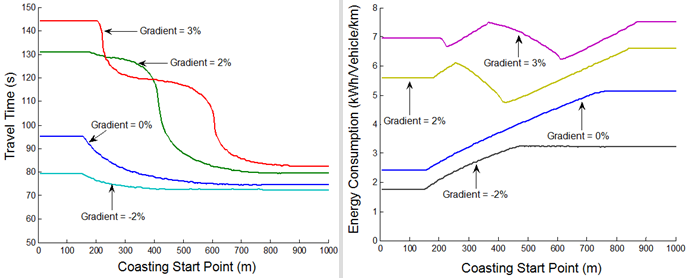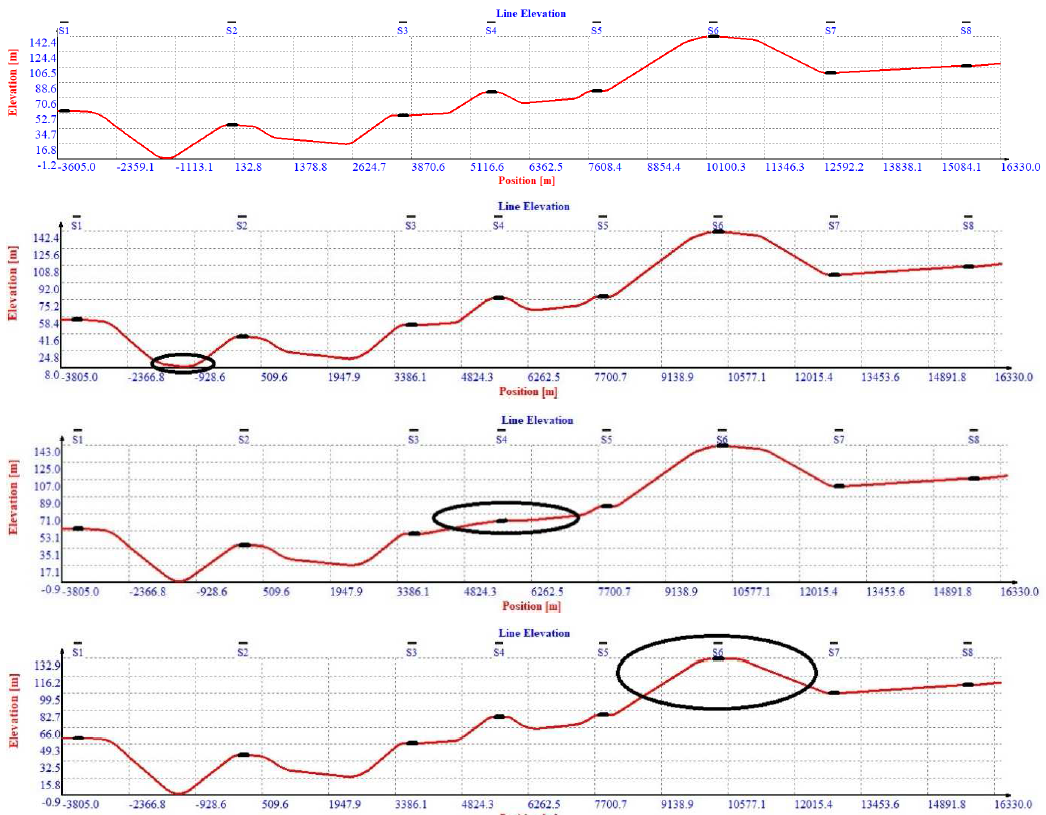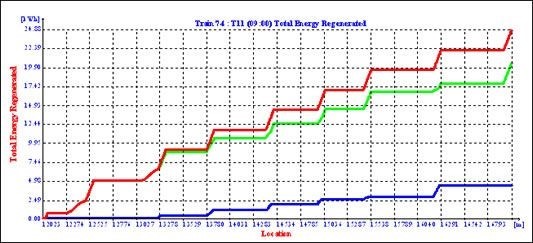ENERGY EFFICIENCY AND ALIGNMENT OPTIMIZATION
Increasing demand for greener operation is the driving force for searching better algorithms giving the most energy saving. Hi-SimuX can model many different energy saving strategies with the actual data of the planned line and determine their effects and possible savings on the system and also assess their fitness.
Hi-SimuX calculates energy consumption and travel time against different coasting start points. It can be plugged into Artificial Neural Networks and Genetic Algorithms for very detailed optimization problems.
Hi-SimuX assists the operators to find optimum coasting point(s) for a given travel time. Complexity and length of the line does not pose a problem due to flexibility of the software.
Simulation results of a DMU set travelling for 14.5 km on a line is given below. The first graph shows the vertical alignment of the line section, and the second graph gives all-out operation velocity profile. The last graph shows velocity profile for a coasting strategy by preventing unnecessary acceleration and implementation of coasting strategy.
Numerous alternative route plans can be created during new line and extension projects. Which route will provide the optimal balance between energy consumption and travel time? Hi-SimuX’s ability to model alignment data in different formats in a flexible and fast way makes it possible to evaluate many alternative routes in a short time.
It was calculated that there will be 2.7% difference between the lowest and highest energy consumption values in these profiles.
REGENERATIVE BRAKING ENERGY RECUPERATION
Nowadays, regenerative braking function in trains is almost a common feature. During trains’ braking, a large part of the regenerated energy is used by other trains on the line and the remaining un-used part is burnt in the braking resistors. Accurate calculation of the amount of burnt energy carries great importance for making decision of additional investment for additional systems (such as inverters and energy storage devices).
How can system and vehicle characteristics be optimized to maximize the electrical energy being returned to the system through braking? Hi-SimuX’s sophisticated algorithms support the optimization process to reduce the carbon footprint of electrified rail networks and optimize their energy saving and energy recovery characteristics.
Below given figures show unused regenerated energy along the line and a train’s regenerated energy together with its used and burnt parts are given. The last graph shows a downhill travelling train’s regenerated/used (by its own aux systems and given to the catenary line are shown separately)/burnt power amounts.





